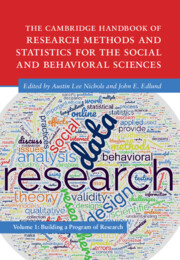 The Cambridge Handbook of Research Methods and Statistics for the Social and Behavioral Sciences
The Cambridge Handbook of Research Methods and Statistics for the Social and Behavioral Sciences from Part III - Data Collection
Published online by Cambridge University Press: 25 May 2023
This chapter describes some of the issues to be considered when dealing with longitudinal data. Longitudinal data can be defined as data gathered on a set of units over multiple time periods. Longitudinal data can be collected either prospectively or retrospectively, and data can be either qualitative or quantitative. Different ways of deriving repeated observations generate the three main types of longitudinal design: repeated cross-sectional surveys, panel surveys, and retrospective surveys. The world of longitudinal research is thus very heterogeneous. This chapter provides both a summary of advantages and disadvantages of each longitudinal design and some guidelines for authors and researchers.
To save this book to your Kindle, first ensure [email protected] is added to your Approved Personal Document E-mail List under your Personal Document Settings on the Manage Your Content and Devices page of your Amazon account. Then enter the ‘name’ part of your Kindle email address below. Find out more about saving to your Kindle.
Note you can select to save to either the @free.kindle.com or @kindle.com variations. ‘@free.kindle.com’ emails are free but can only be saved to your device when it is connected to wi-fi. ‘@kindle.com’ emails can be delivered even when you are not connected to wi-fi, but note that service fees apply.
Find out more about the Kindle Personal Document Service.
To save content items to your account, please confirm that you agree to abide by our usage policies. If this is the first time you use this feature, you will be asked to authorise Cambridge Core to connect with your account. Find out more about saving content to Dropbox.
To save content items to your account, please confirm that you agree to abide by our usage policies. If this is the first time you use this feature, you will be asked to authorise Cambridge Core to connect with your account. Find out more about saving content to Google Drive.